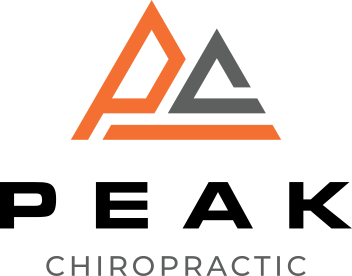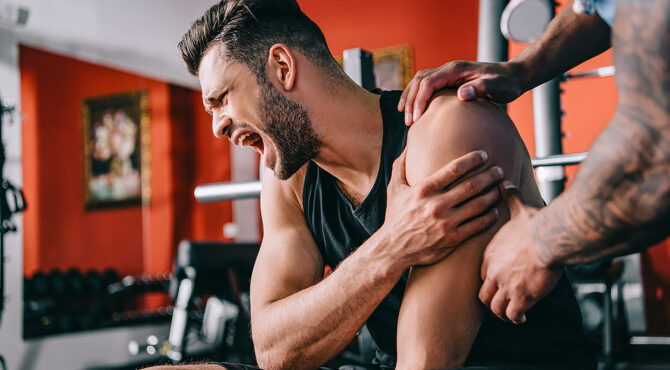When you're working hard to maximize your athletic performance, it's crucial to contemplate alternative techniques that go beyond traditional training. You might find that incorporating mindfulness practices, innovative nutrition, and active recovery methods can greatly enhance your physical and mental resilience. These strategies not only promote better focus and recovery but also help you push through mental barriers. Curious about how to integrate these approaches effectively into your routine? The next steps could transform your performance in ways you hadn't anticipated.
Mindfulness and Meditation
In today's fast-paced world, practicing mindfulness and meditation can greatly enhance your athletic performance. When you incorporate these techniques into your training routine, you'll find that your focus sharpens and your stress levels drop. By dedicating just a few minutes a day to mindfulness or meditation, you can improve your mental resilience, which is essential during high-pressure situations in sports.
Mindfulness helps you become more aware of your thoughts and feelings, allowing you to remain present during competitions. Instead of worrying about past performances or future outcomes, you can channel your energy into the moment at hand. This heightened awareness not only boosts your concentration but also helps you respond more effectively to challenges as they arise.
Meditation, on the other hand, offers a chance to cultivate mental clarity and calmness. Techniques such as deep breathing or visualization can help you visualize success, reinforcing positive outcomes. When you visualize your performance, you create a mental roadmap that can guide you toward achieving your goals.
Incorporating mindfulness and meditation into your routine doesn't have to be complicated. Start with short sessions, gradually increasing the duration as you become more comfortable. You might even consider integrating these practices during warm-ups or cool-downs, turning these moments into opportunities for mental training.
Innovative Nutritional Strategies
Athletes today are discovering the power of innovative nutritional strategies to optimize their performance.
These strategies not only fuel your body but also enhance recovery and mental focus. By implementing cutting-edge nutrition practices, you can gain a significant edge over your competition.
Here are four innovative nutritional strategies you might consider:
- Personalized Meal Plans: Tailor your diet to your specific needs based on your body type, training regimen, and performance goals. Using apps and consultations with nutritionists can help you create a plan that maximizes your energy and recovery.
- Intermittent Fasting: Many athletes are exploring intermittent fasting to improve endurance and metabolic efficiency. By timing your meals strategically, you can optimize fat utilization and enhance your overall performance.
- Plant-Based Proteins: Incorporating more plant-based proteins into your diet can provide essential nutrients while reducing inflammation. Foods like lentils, quinoa, and chickpeas are excellent sources of protein that can help you recover faster.
- Hydration Innovations: Stay ahead by experimenting with advanced hydration techniques, including electrolyte-rich drinks and hydration testing. Understanding your hydration needs can prevent fatigue and cramping during training and competitions.
Breathwork Techniques
While innovative nutritional strategies play a significant role in performance enhancement, breathwork techniques can also elevate your athletic capabilities. By integrating specific breathing exercises into your routine, you can improve oxygen delivery to your muscles, increase endurance, and enhance mental focus.
One effective technique is diaphragmatic breathing. This deep breathing method encourages full oxygen exchange and helps lower stress levels. To practice, sit or lie down comfortably, place one hand on your chest and the other on your abdomen, and inhale deeply through your nose. Confirm your abdomen rises while your chest remains relatively still. Exhale slowly through your mouth, allowing your abdomen to fall. Repeat this process for several minutes to maximize your oxygen intake.
Another powerful method is box breathing, which can help regulate your heart rate and calm your mind. To do this, inhale through your nose for a count of four, hold your breath for four counts, exhale through your mouth for four counts, and then hold your breath again for four counts. This cycle can be repeated several times, making it a great tool before a big competition or during high-pressure moments.
Lastly, try the 4-7-8 technique, which promotes relaxation and recovery. Inhale for four counts, hold your breath for seven counts, and exhale for eight counts.
Incorporating these breathwork techniques into your training sessions won't only optimize your physical performance but also enhance your mental resilience, ultimately helping you reach new heights in your athletic journey.
Active Recovery Methods
Active recovery is essential for enhancing your athletic performance and speeding up recovery between intense workouts.
By incorporating techniques like light jogging or yoga into your routine, you can boost circulation and reduce muscle soreness.
Let's explore the benefits and practical methods that can make a difference in your recovery sessions.
Benefits of Active Recovery
When you incorporate active recovery methods into your training routine, you can greatly enhance your overall performance and reduce the risk of injury. Active recovery isn't just about resting; it's an essential part of your regimen that helps your body recover and prepare for future workouts.
Here are some key benefits you can expect:
- Improved Circulation: Engaging in low-intensity activities boosts blood flow, delivering oxygen and nutrients to your muscles more efficiently.
- Reduced Muscle Soreness: Active recovery can help alleviate delayed onset muscle soreness (DOMS), making your recovery period more comfortable.
- Enhanced Flexibility: Incorporating gentle movements aids in maintaining and improving your flexibility, which is vital for peak athletic performance.
- Mental Refreshment: Taking time for active recovery allows you to mentally reset, reducing the risk of burnout and keeping you motivated.
Techniques for Recovery Sessions
Incorporating effective techniques into your recovery sessions can greatly enhance the benefits of active recovery. One of the most popular methods is light aerobic exercise. Activities like walking, cycling, or swimming at a low intensity help increase blood flow, which aids in the removal of metabolic waste and accelerates healing.
Stretching is another fantastic technique. By performing dynamic stretches, you maintain flexibility and reduce muscle tightness, promoting ideal recovery. You could also try foam rolling, which helps alleviate muscle soreness and improve tissue quality by breaking down knots and increasing circulation.
Consider integrating yoga into your routine. It not only enhances flexibility but also focuses on breath control, which can help you relax and reduce stress levels.
Hydration plays an essential role too; make sure you're drinking enough water to support recovery.
Lastly, don't underestimate the power of adequate sleep. Aim for 7-9 hours per night to allow your body to repair and regenerate.
Cold Therapy Benefits
Cold therapy can markedly enhance your recovery time after intense workouts.
By reducing inflammation, it helps you bounce back faster and keeps you performing at your best.
Incorporating this technique into your routine can make a noticeable difference in how you feel and recover.
Enhanced Recovery Time
Utilizing cold therapy can greatly enhance recovery time for athletes, allowing you to bounce back faster between workouts and competitions. By incorporating cold therapy techniques, you can experience several key benefits:
- Reduced Muscle Soreness: Cold exposure helps alleviate delayed onset muscle soreness (DOMS), making it easier to get back to training sooner.
- Improved Circulation: Alternating between cold and warm temperatures can stimulate blood flow, aiding in the delivery of nutrients to your muscles for effective recovery.
- Enhanced Sleep Quality: Cold therapy can promote better sleep, which is vital for recovery. A well-rested body can repair itself more efficiently.
- Mental Resilience: Regularly using cold therapy can build mental toughness, helping you push through physical challenges and improve your overall performance.
Incorporating cold therapy into your routine isn't just about physical recovery; it also helps you mentally prepare for the next challenge.
Whether you're taking an ice bath or using cold packs, these methods can considerably shorten your recovery time, giving you the edge you need to excel in your sport.
Reduced Inflammation Effects
Through the application of cold therapy, athletes can effectively reduce inflammation, which is essential for maintaining peak performance. When you expose your body to cold temperatures, whether through ice packs, cold baths, or cryotherapy, you constrict blood vessels. This process slows down circulation, which helps to decrease swelling and soreness in muscles after intense workouts or competitions.
You'll find that cold therapy not only reduces inflammation but also speeds up recovery. By minimizing inflammation, you'll enable your body to heal more efficiently, allowing you to train harder and perform better. Incorporating cold therapy into your routine can lead to quicker return-to-play times after injuries, helping you stay consistent in your training.
Additionally, cold therapy can help alleviate pain, which often accompanies inflammation. By addressing both issues simultaneously, you'll be able to push through your workouts with less discomfort.
Remember to listen to your body; while cold therapy is beneficial, it's important not to overdo it. Striking the right balance will guarantee you maximize your athletic performance without risking further injury. Cold therapy could be the game-changer you need to elevate your training and competition results.
Visualization Practices
Effective visualization practices can greatly enhance your athletic performance by helping you mentally rehearse skills and strategies. When you visualize, you create a mental blueprint for success, allowing your brain to process and refine your movements without physically performing them.
Here are some key techniques to incorporate into your routine:
- Set Clear Goals: Before you start visualizing, identify specific objectives. Whether it's improving a technique or boosting your overall performance, having clear goals will guide your visualization process.
- Use All Senses: Engage all your senses while visualizing. Picture the sights, sounds, and even the smells of your environment. This multi-sensory approach makes the experience more realistic and impactful.
- Practice Regularly: Like any skill, visualization improves with practice. Set aside time daily to visualize your performance. Consistency will strengthen your mental imagery, making it more effective when you compete.
- Stay Positive: Focus on positive outcomes during your visualization sessions. Picture yourself succeeding, overcoming challenges, and executing skills flawlessly. This positive reinforcement builds confidence and helps reduce anxiety before competitions.
Cross-Training Approaches
Cross-training can greatly enhance your athletic performance by improving strength and reducing the risk of injury.
You'll find various popular activities, from cycling to yoga, that can fit into your routine.
Let's explore how to design a cross-training plan tailored to your goals.
Benefits of Cross-Training
Enhancing your athletic performance often involves embracing diverse workout methods, and cross-training is a powerful approach to doing just that.
By integrating different activities into your routine, you can unveil a range of benefits that elevate your overall fitness. Here are four key advantages of cross-training:
- Injury Prevention: By varying your workouts, you reduce the risk of overuse injuries that often come from repetitive movements.
- Enhanced Strength and Endurance: Combining different exercises targets various muscle groups, improving overall strength and cardiovascular endurance.
- Mental Stimulation: Switching up your routine keeps workouts fresh and exciting, which can boost motivation and adherence to your training plan.
- Balanced Fitness: Cross-training helps to develop a well-rounded fitness profile, ensuring you're not only good at one sport but can excel in multiple areas.
Incorporating cross-training into your regimen can prepare you for unexpected challenges in competition, making you a more versatile athlete.
Popular Cross-Training Activities
While you might've a go-to workout routine, incorporating popular cross-training activities can greatly elevate your athletic performance. Cross-training isn't just about variety; it's about enhancing your overall fitness and reducing the risk of injury.
One effective cross-training activity is swimming. It builds endurance and strength while being easy on your joints.
If you're looking for something more intense, consider high-intensity interval training (HIIT). This approach combines short bursts of intense exercise with rest or low-intensity periods, improving your speed and agility.
Cycling is another excellent choice. Whether you opt for outdoor biking or stationary cycling, it strengthens your legs and boosts cardiovascular fitness without the impact of running.
Yoga can also be a game-changer. It increases flexibility, balance, and mental focus, which can all benefit your primary sport.
Don't overlook strength training, either. Incorporating resistance exercises helps build muscle, which translates to better performance in your main activities.
By mixing these cross-training activities into your routine, you'll not only enhance your skills but also keep your workouts fresh and engaging.
Designing a Cross-Training Plan
Creating an effective cross-training plan is all about finding the right balance that suits your fitness goals and lifestyle. To get started, consider these key components:
- Identify Your Goals: Determine whether you're aiming to build strength, improve endurance, or enhance flexibility. Your goals will shape your plan.
- Choose Complementary Activities: Select exercises that target different muscle groups or skills. For instance, if you're a runner, incorporate cycling, swimming, or strength training to avoid overuse injuries.
- Schedule Wisely: Plan your workouts to allow adequate recovery time. A good rule of thumb is to alternate high-intensity days with lower-intensity sessions, ensuring you don't burn out.
- Monitor Progress: Keep track of your performance in each activity. This will help you adjust your plan as needed, ensuring you're continually challenged and engaged.
Sleep Optimization Tips
Achieving ideal sleep is essential for maximizing your athletic performance, and there are several strategies you can implement to improve the quality of your rest. First, establish a consistent sleep schedule by going to bed and waking up at the same time every day. This helps regulate your body's internal clock and enhances the quality of your sleep.
Next, create a relaxing bedtime routine. Engage in calming activities like reading or gentle stretching before bed. Avoid screens for at least an hour before sleep, as the blue light emitted can interfere with your ability to fall asleep. Instead, consider dimming the lights to signal to your body that it's time to wind down.
Your sleep environment plays a vital role, too. Make sure your bedroom is cool, dark, and quiet. Consider using blackout curtains or a sleep mask to block out light and earplugs or a white noise machine to minimize disruptive sounds.
Pay attention to your diet as well. Avoid heavy meals, caffeine, and alcohol close to bedtime, as they can disrupt your sleep cycle. Instead, opt for a light snack if you're hungry, focusing on foods that promote sleep, like those rich in magnesium or tryptophan.
Finally, incorporate regular physical activity into your routine, but try to avoid intense workouts right before bed. Aim for at least 30 minutes of moderate exercise during the day to boost your overall sleep quality.
Strengthening Mental Resilience
To maximize your athletic performance, strengthening mental resilience is just as essential as physical training. Your mind plays a significant role in how you handle challenges, stress, and setbacks during competition. Building this mental toughness can set you apart from your competitors.
Here are four effective strategies to enhance your mental resilience:
- Practice Visualization: Spend time visualizing your performance. Picture yourself executing skills flawlessly, overcoming obstacles, and achieving your goals. This mental rehearsal can increase your confidence and prepare you for real-life scenarios.
- Develop a Growth Mindset: Embrace challenges and view failures as opportunities to learn. A growth mindset encourages you to persist in the face of adversity, helping you bounce back stronger after setbacks.
- Implement Mindfulness Techniques: Incorporate mindfulness practices like meditation or deep-breathing exercises into your routine. These techniques can help you stay present, reduce anxiety, and improve your focus during competitions.
- Set Realistic Goals: Break your long-term objectives into smaller, achievable milestones. This approach not only keeps you motivated but also helps you measure your progress, allowing you to celebrate small victories along the way.
Role of Supplements
While mental resilience is essential for athletic performance, the role of supplements shouldn't be overlooked. You might be surprised at how the right supplements can enhance your training, recovery, and overall performance. Many athletes turn to supplements to bridge nutritional gaps or boost specific aspects of their fitness regimen.
First off, protein supplements can help you meet your daily protein needs, vital for muscle repair and growth. Whether you're using whey, casein, or plant-based options, they're a convenient way to fuel your body post-workout.
Creatine is another popular choice, known for increasing strength and power during high-intensity training. It helps improve your performance in sprinting and weightlifting, making it a go-to for many serious athletes.
Don't forget about vitamins and minerals. They play a pivotal role in energy production and muscle function. For instance, magnesium and zinc can help reduce muscle cramps and improve recovery times.
Omega-3 fatty acids, found in fish oil, may also aid in reducing inflammation, allowing you to train harder and recover faster.
Lastly, hydration supplements, like electrolyte powders, can replace lost minerals during intense workouts, ensuring you stay at your peak.
Remember, though, supplements should complement a balanced diet, not replace it. Always consult a healthcare professional before starting any new supplement regimen.
Conclusion
By embracing these alternative techniques, you can greatly boost your athletic performance. Mindfulness and innovative nutrition enhance your focus and energy, while breathwork and active recovery keep you relaxed and ready to compete. Don't underestimate the power of cold therapy and cross-training to build resilience, and prioritize sleep to guarantee peak recovery. Finally, consider supplements to support your training regimen. With these strategies, you're well on your way to achieving your athletic goals.



